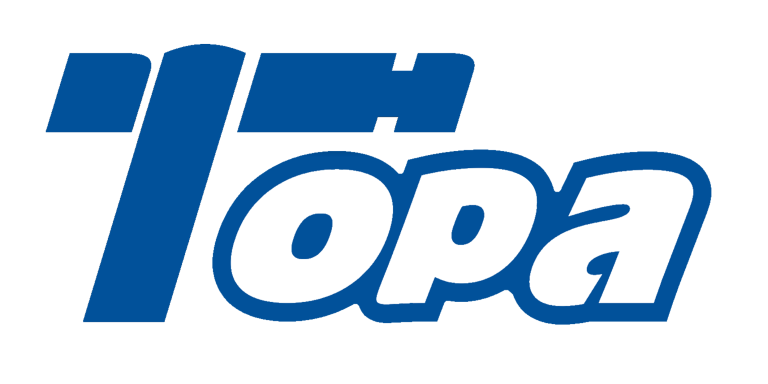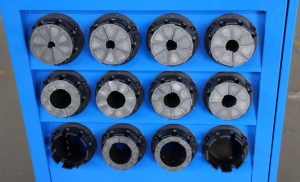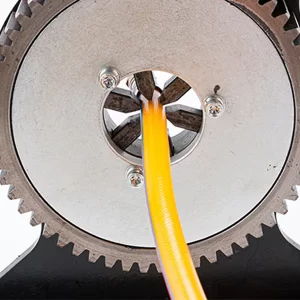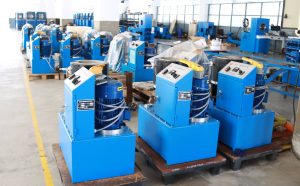Understanding what future trends are driving the hydraulic hose crimper industry is essential for businesses seeking to stay competitive and efficient. This article, titled “What Future Trends Are Driving the Hydraulic Hose Crimper Industry?”, examines technological, operational, and market trends shaping the future. But here’s the kicker: the hydraulic hose crimper industry is rapidly evolving with innovations like AI, IoT, sustainability efforts, and digital transformation. This article explores these developments in depth, highlighting how they impact manufacturers, service providers, and end-users. Our goal is to provide a detailed outlook that prepares industry professionals for upcoming changes and opportunities.
1. What key technological advancements are influencing the hydraulic hose crimper industry?
Technological innovation drives the evolution of hydraulic hose crimping equipment. Automation and robotics increasingly perform tasks once handled manually, boosting precision and throughput. For example, an automotive supplier integrated robotic crimping arms, improving consistency while reducing labor costs. Artificial intelligence (AI) enhances quality control by detecting defects via image recognition, as seen in a manufacturer that cut rejects by 30%. Advanced sensors monitor pressure and temperature in real time, allowing immediate corrections. Ready for the good part? These innovations not only improve quality but reduce waste and downtime, transforming production lines into smarter, more adaptive systems. Companies embracing technology lead in efficiency and product reliability.
| Technology | Application | Benefit |
|---|---|---|
| Robotics | Automated crimping | Enhanced precision and speed |
| Artificial Intelligence | Defect detection | Lower scrap rates |
| Advanced Sensors | Real-time monitoring | Improved process control |
2. How is Industry 4.0 shaping hydraulic hose crimper manufacturing?
Industry 4.0 embodies digital transformation through interconnected machines and data analytics. Hydraulic hose crimpers now participate in smart factories, where they communicate with other devices and central systems. Real-time data analytics help optimize workflows by predicting maintenance needs and adjusting parameters dynamically. A factory employing Industry 4.0 solutions reduced unexpected downtime by 25% through predictive alerts. This is where it gets interesting: digital twins simulate machine performance, enabling virtual testing and continuous improvement without physical disruptions. Integration with enterprise systems allows seamless data flow, empowering managers with actionable insights. Industry 4.0 is not just a trend but a strategic shift transforming manufacturing efficiency and agility.
| Industry 4.0 Component | Function | Operational Impact |
|---|---|---|
| Machine Connectivity | Device communication | Synchronized production |
| Predictive Analytics | Maintenance forecasting | Reduced downtime |
| Digital Twins | Virtual simulations | Process optimization |
3. What role does artificial intelligence play in hydraulic hose crimping?
Artificial intelligence elevates hydraulic hose crimping by automating complex decision-making. AI-powered vision systems inspect crimps for defects faster than humans. One industrial client reported a 40% reduction in quality issues after deploying AI inspection. Machine learning algorithms analyze historical data to optimize crimping parameters for new hose types, improving consistency. AI-driven predictive maintenance schedules servicing before failures occur, minimizing downtime. But here’s the kicker: AI also supports adaptive learning, where systems continuously improve through data feedback loops. This dynamic capability enhances reliability and lowers operational costs over time. As AI matures, its integration into crimping workflows becomes indispensable.
| AI Application | Benefit | Example |
|---|---|---|
| Automated Inspection | Fast and accurate defect detection | 40% fewer rejects |
| Parameter Optimization | Improved process consistency | Reduced setup time |
| Predictive Maintenance | Minimized downtime | Proactive servicing |
4. How are IoT devices enhancing hydraulic hose crimper performance?
The Internet of Things (IoT) connects hydraulic hose crimpers to broader networks, enabling real-time monitoring and remote management. Sensors embedded in crimpers collect data on temperature, pressure, and cycle counts. A manufacturer using IoT dashboards gained instant visibility into machine health across multiple sites, reducing emergency repairs. Remote diagnostics allow technicians to troubleshoot issues without onsite visits, saving time and travel costs. IoT also facilitates integration with supply chain systems, enhancing inventory management. Ready for the good part? This connectivity transforms crimpers into intelligent devices that provide continuous feedback, enabling smarter, data-driven decisions and better resource allocation.
| IoT Feature | Capability | Business Benefit |
|---|---|---|
| Real-Time Monitoring | Machine status updates | Faster issue detection |
| Remote Diagnostics | Offsite troubleshooting | Reduced service costs |
| Supply Chain Integration | Inventory and workflow sync | Improved logistics |
5. What impact do software and digital platforms have on the industry’s future?
Software and digital platforms enable centralized control, reporting, and analytics for hydraulic hose crimpers. Cloud-based solutions allow access to machine data anytime, anywhere, facilitating collaboration among teams. Customizable user interfaces make it easier for operators to adjust settings and track performance. An assembly plant implemented software that integrated crimper output with ERP systems, reducing manual entry errors by 60%. Software upgrades provide new features and security patches, extending equipment life. This is where it gets interesting: digital twins and simulation platforms allow virtual testing of process changes before implementation. Software ecosystems are becoming as important as the hardware itself.
| Software Platform | Feature | Advantage |
|---|---|---|
| Cloud Access | Remote data availability | Improved collaboration |
| ERP Integration | Automated data flow | Reduced manual errors |
| Simulation Tools | Virtual process modeling | Risk reduction |
6. How is sustainability influencing hydraulic hose crimper design and operation?
Sustainability concerns are driving the development of energy-efficient crimpers and eco-friendly manufacturing processes. New models consume less power through optimized hydraulics and standby modes. A factory adopting energy-saving crimpers reduced electricity costs by 15%. Environmentally friendly materials in machine components improve recyclability. Waste reduction programs minimize scrap through better precision and process control. But here’s the kicker: regulatory pressure and customer demand push manufacturers to adopt greener technologies. Life cycle assessments guide design decisions, focusing on reducing carbon footprints and hazardous waste. Sustainability is not just compliance but a competitive advantage shaping future crimper development.
| Sustainability Aspect | Initiative | Environmental Impact |
|---|---|---|
| Energy Efficiency | Low-power hydraulics | Reduced electricity use |
| Material Choice | Recyclable components | Lower environmental burden |
| Waste Management | Scrap reduction programs | Less landfill waste |
7. What new materials and manufacturing techniques are emerging?
Material science innovations introduce advanced alloys and composites that enhance durability and reduce weight. These materials extend machine life and improve performance. Additive manufacturing, or 3D printing, allows rapid prototyping and custom part production, speeding design cycles. Precision engineering techniques improve tolerances, reducing defects. Ready for the good part? A manufacturer producing custom die components with 3D printing cut lead times by 50%. These techniques enable more flexible, responsive manufacturing, essential for meeting diverse customer demands. The industry is evolving toward smarter, lighter, and stronger crimping equipment.
| Innovation | Description | Benefit |
|---|---|---|
| Advanced Materials | Alloys and composites | Improved durability |
| Additive Manufacturing | 3D printed parts | Faster prototyping |
| Precision Engineering | Tight tolerance machining | Reduced defects |
8. How are safety standards evolving in hydraulic hose crimper technology?
Safety improvements include sensors that detect operator presence and emergency stop features. Machines now comply with stricter international standards, such as ISO and OSHA requirements. Training programs incorporate simulation and virtual reality to prepare operators safely. This is where it gets interesting: real-time safety monitoring systems can halt operations instantly if hazards are detected. Enhanced safety reduces accidents, legal risks, and insurance costs. Companies investing in safety see benefits in workforce morale and operational continuity, setting industry benchmarks.
| Safety Feature | Purpose | Benefit |
|---|---|---|
| Presence Sensors | Detect operator proximity | Prevents accidental injury |
| Emergency Stops | Immediate shutdown | Rapid hazard response |
| VR Training | Simulated scenarios | Safe operator preparation |
9. What trends are shaping operator training and workforce development?
Operator training increasingly uses virtual reality (VR) and augmented reality (AR) for immersive learning. These tools simulate crimping processes, helping trainees gain experience without risk. Remote learning and certification platforms provide flexibility for busy schedules. A company using AR-assisted training improved skill retention by 35%. Cross-disciplinary skills, including digital literacy, become essential as software integration grows. But here’s the kicker: continuous learning keeps the workforce agile and reduces errors, contributing to productivity and safety.
| Training Method | Delivery Mode | Outcome |
|---|---|---|
| Virtual Reality (VR) | Immersive simulations | Enhanced skill acquisition |
| Augmented Reality (AR) | On-site guided assistance | Real-time support |
| Online Certification | Remote learning | Flexible and scalable |
10. How is the global market demand influencing industry innovation?
Emerging markets drive demand for affordable yet reliable crimping solutions, pushing innovation in cost-effective manufacturing. Customization for regional hose types and standards is increasing. Intense global competition accelerates feature development and service models. Ready for the good part? A manufacturer expanding into Asia tailored equipment specs, winning significant market share. Global trends influence not only product design but also after-sales support and digital services. Understanding market nuances is key for sustained growth and innovation.
| Market Factor | Influence | Industry Response |
|---|---|---|
| Emerging Markets | Increased demand | Affordable, adaptable products |
| Regional Standards | Customization needs | Localized design |
| Competitive Pressure | Accelerated innovation | Faster product cycles |
11. What role do partnerships and collaborations play in driving future trends?
Collaboration between manufacturers, technology providers, and research institutions fuels innovation. Joint ventures enable combining expertise in hydraulics and software development. Industry consortia promote standards for interoperability and safety. But here’s the kicker: collaborative R\&D accelerates the introduction of cutting-edge solutions, like AI and IoT-enabled crimpers. Companies leveraging partnerships gain access to new markets and technology faster. Networking fosters shared knowledge, reducing development risks and costs.
| Collaboration Type | Benefit | Example |
|---|---|---|
| Joint Ventures | Combined expertise | AI-powered crimper development |
| Industry Consortia | Standardization efforts | Interoperability protocols |
| Academic Partnerships | Research collaboration | New material innovation |
12. How is cybersecurity becoming a critical concern for hydraulic hose crimpers?
As crimpers connect to networks and cloud platforms, cybersecurity becomes vital. Risks include unauthorized access, data breaches, and operational sabotage. Companies implement firewalls, encryption, and user authentication to protect systems. Regular security audits and employee training are essential. This is where it gets interesting: cybersecurity breaches can cause costly downtime and damage brand reputation. Designing secure architectures ensures safe operation and compliance with data protection regulations.
| Cybersecurity Measure | Purpose | Impact |
|---|---|---|
| Encryption | Secure data transmission | Protects against interception |
| User Authentication | Access control | Prevents unauthorized use |
| Security Audits | Vulnerability assessment | Enhances defense posture |
13. What are the financial implications of adopting new trends?
Investment in new technologies involves upfront costs, but offers long-term savings through efficiency and quality gains. Budgeting for software licenses, hardware upgrades, and training is necessary. Companies must perform cost-benefit analyses to prioritize investments. Financing options, including leasing and subsidies, mitigate cash flow challenges. Ready for the good part? Many firms report ROI within two years due to reduced waste and downtime. Sound financial planning supports innovation adoption without disrupting operations.
| Financial Factor | Description | Business Effect |
|---|---|---|
| Upfront Investment | Equipment and software costs | Capital expenditure |
| Operating Expenses | Maintenance and training | Recurring costs |
| Financing Options | Leasing, subsidies | Cash flow management |
14. How will customer expectations shape future hydraulic hose crimper features?
Customers demand higher precision, reliability, and customization options. Faster turnaround and flexible production volumes are increasingly important. Support services, including remote diagnostics and software updates, influence purchasing decisions. But here’s the kicker: crimper manufacturers must innovate continuously to meet evolving client needs or risk losing market share. User-friendly interfaces and integration with digital ecosystems are now baseline expectations. Understanding customer feedback guides feature development and service enhancement.
| Customer Expectation | Feature Demand | Manufacturer Response |
|---|---|---|
| Precision | High-quality crimps | Advanced sensors and AI |
| Flexibility | Custom job handling | Modular machine designs |
| Service Support | Remote assistance | Cloud-based monitoring |
15. What future innovations can we expect in hydraulic hose crimper technology?
Future innovations include fully autonomous crimping systems powered by AI that require minimal human intervention. Materials with self-healing properties may enhance durability. Blockchain technology could ensure traceability from raw materials to finished hoses. Augmented reality may expand training and maintenance capabilities. This is where it gets interesting: these technologies promise to revolutionize quality, safety, and supply chain transparency. Early adopters will set new industry standards, leaving others behind. Keeping pace with innovation is critical for sustained success.
| Innovation | Description | Potential Impact |
|---|---|---|
| Autonomous Systems | AI-driven operation | Labor reduction and consistency |
| Self-Healing Materials | Damage repair capability | Extended equipment life |
| Blockchain | Traceability and transparency | Enhanced supply chain trust |
FAQ Section
Q1: What is Industry 4.0 and how does it relate to hydraulic hose crimpers?
Industry 4.0 integrates digital technologies in manufacturing, enabling smart, interconnected crimpers.
Q2: How does AI improve hydraulic hose crimper operations?
AI automates quality control, optimizes processes, and supports decision-making.
Q3: What sustainability trends affect hydraulic hose crimper design?
Energy efficiency, eco-friendly materials, and waste reduction initiatives shape design.
Q4: Why is cybersecurity important for connected crimping machines?
It protects against data breaches and operational disruptions.
Q5: What role do VR and AR play in operator training?
They offer immersive training that enhances skill and safety.




